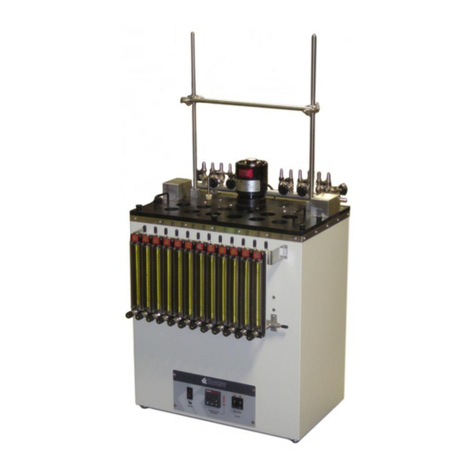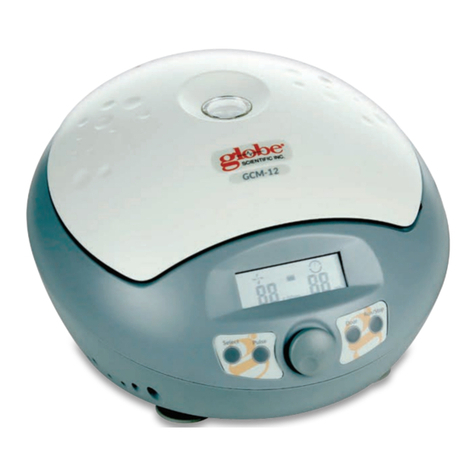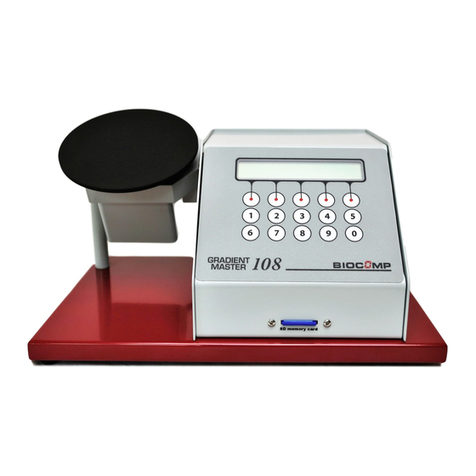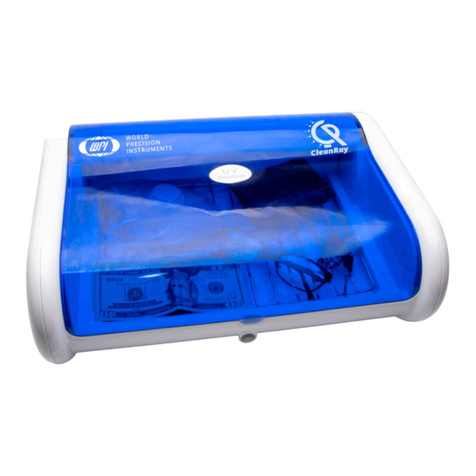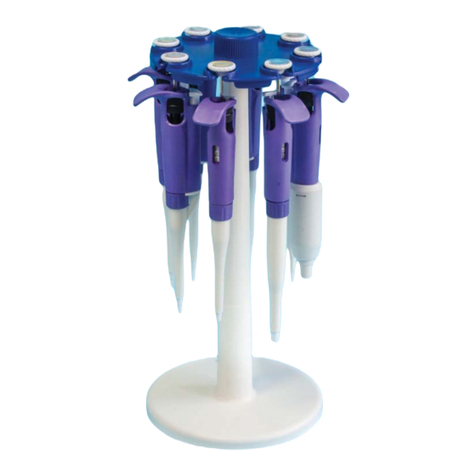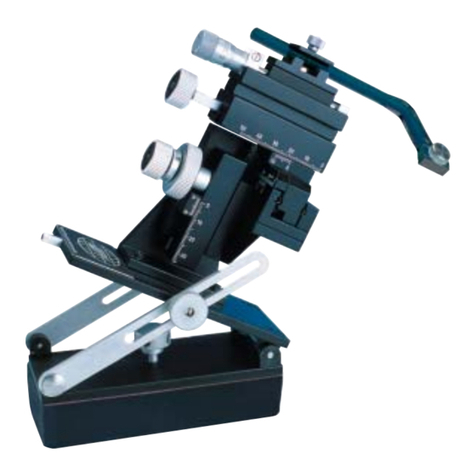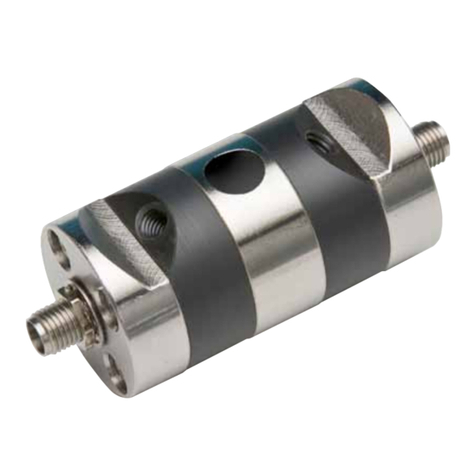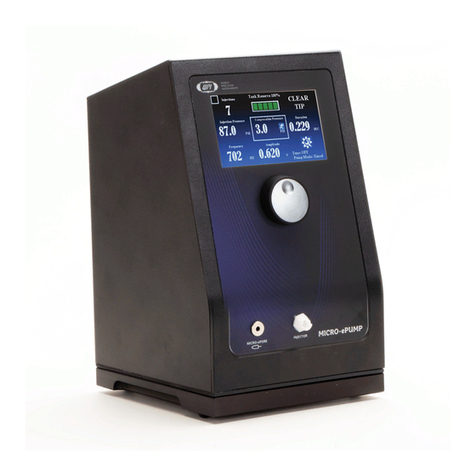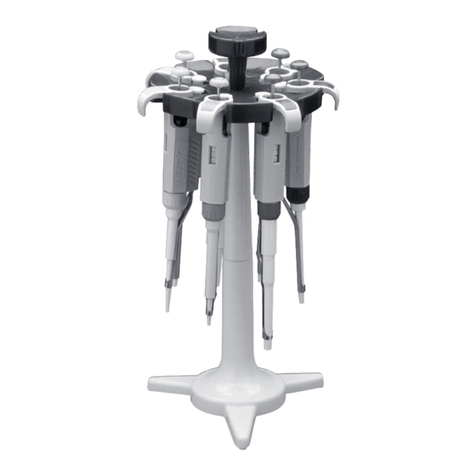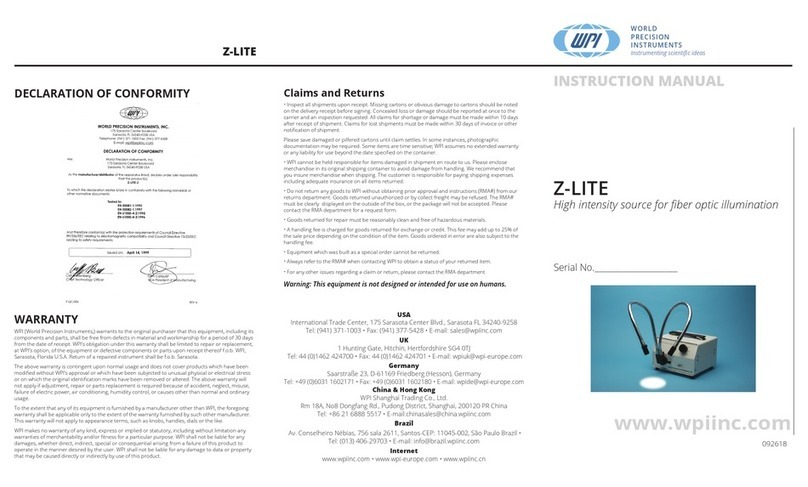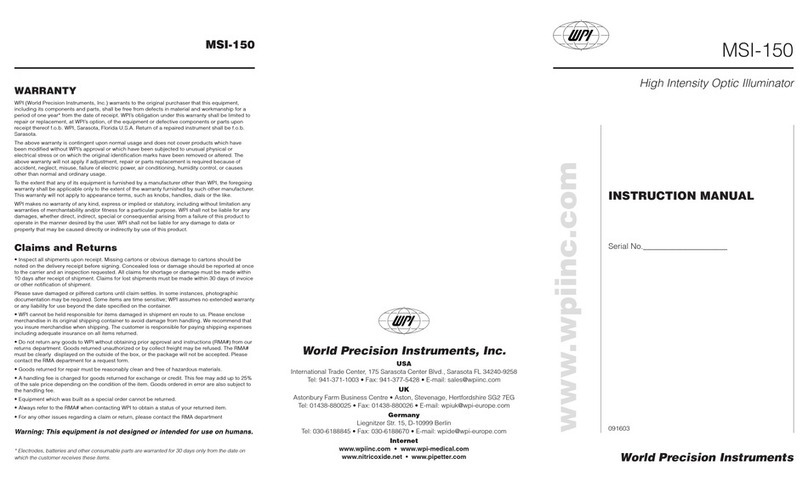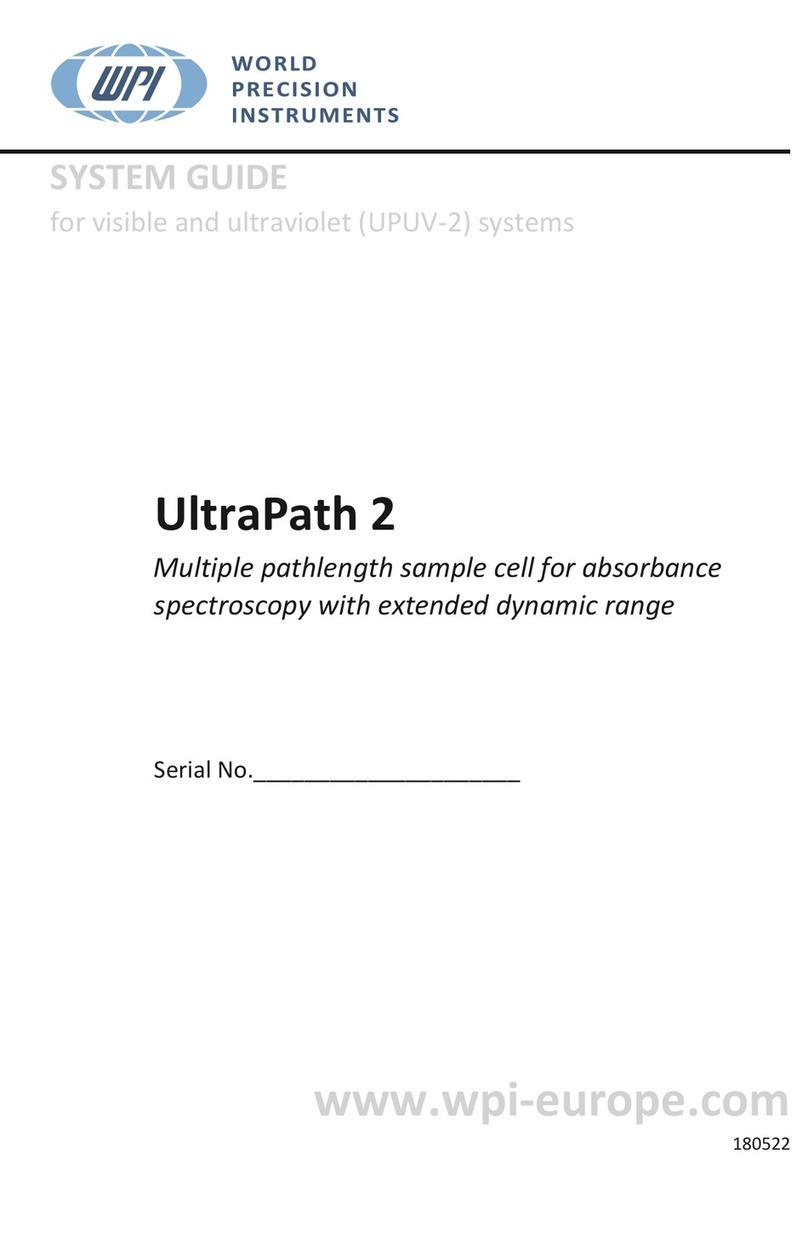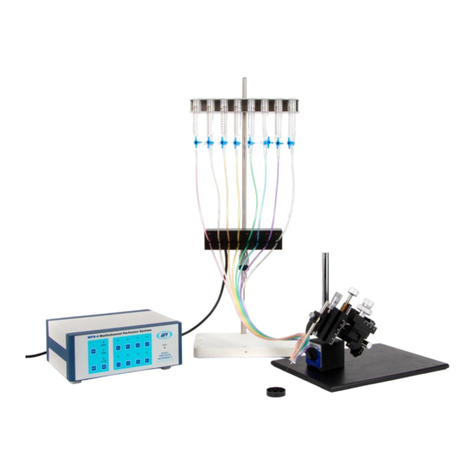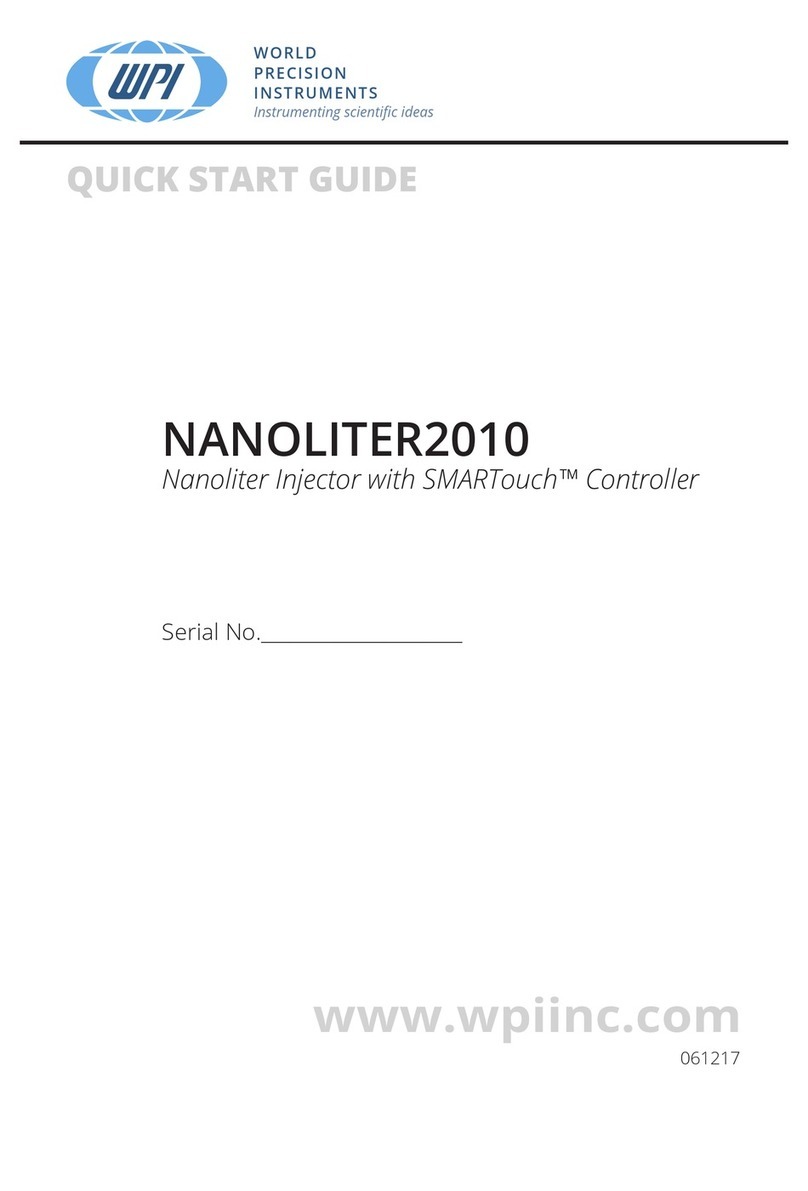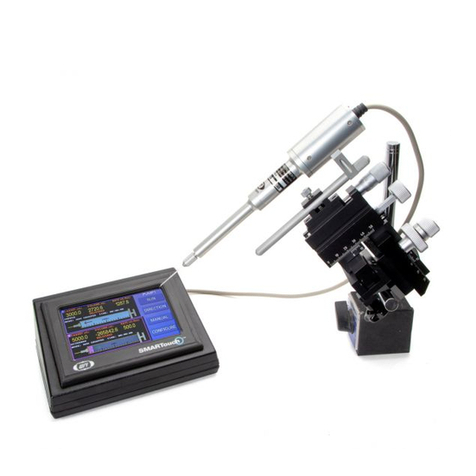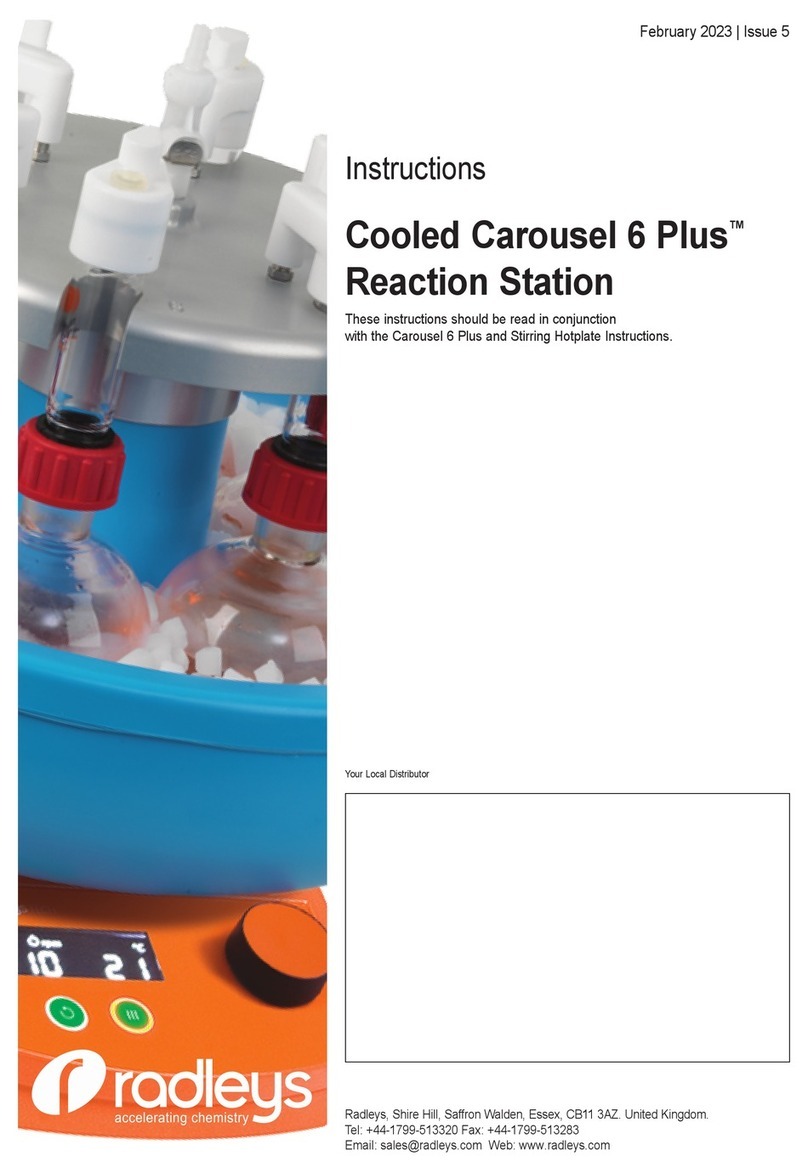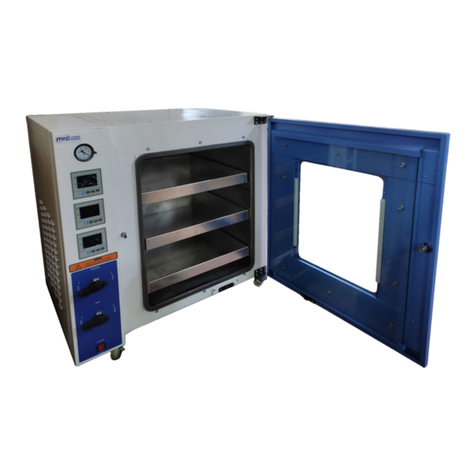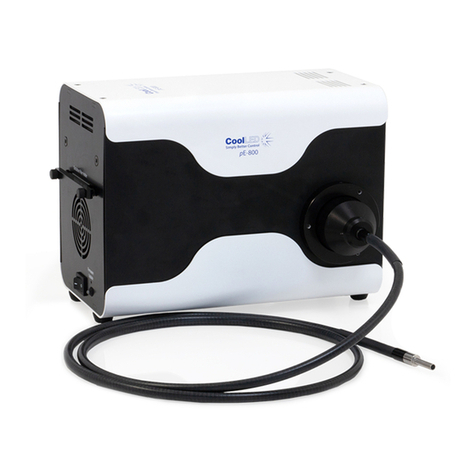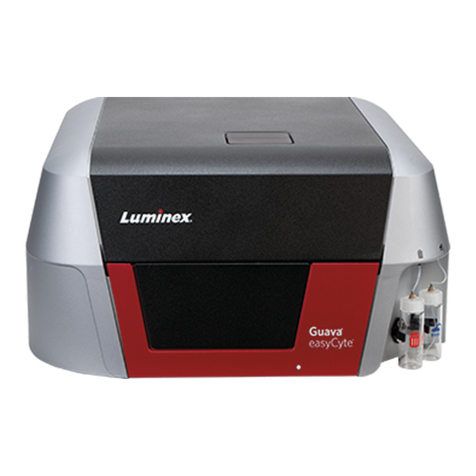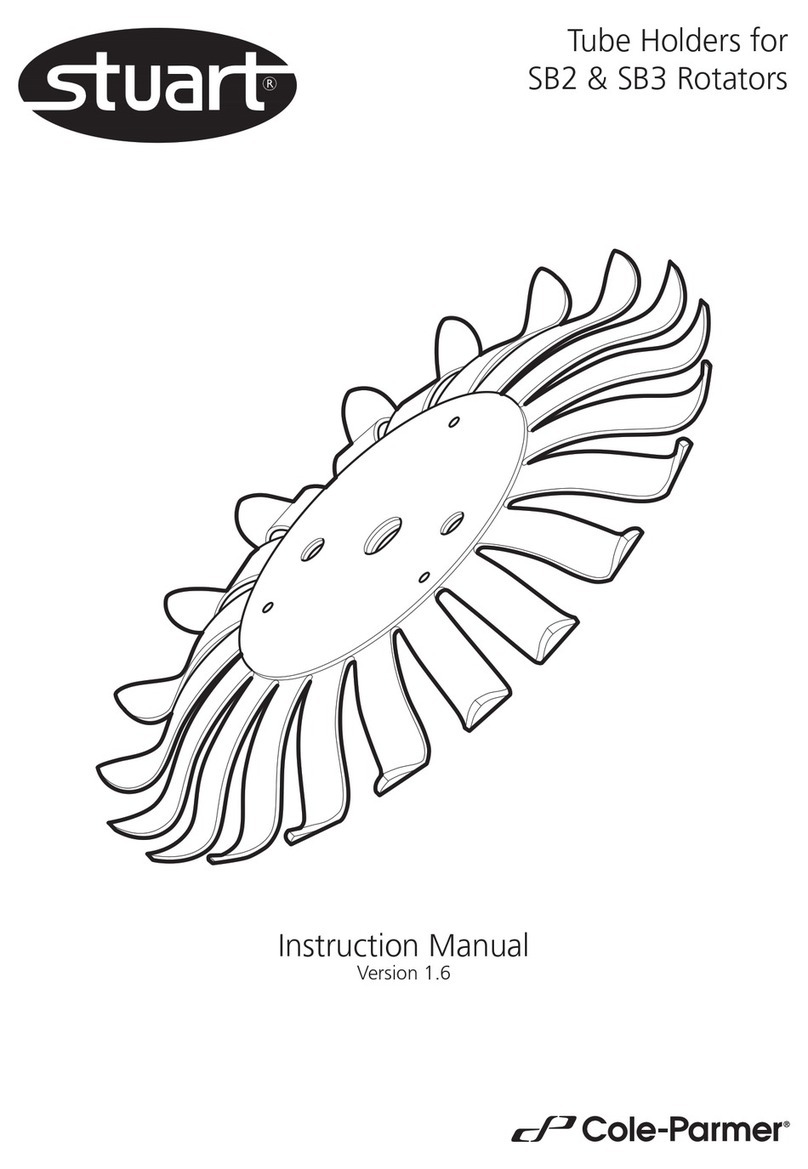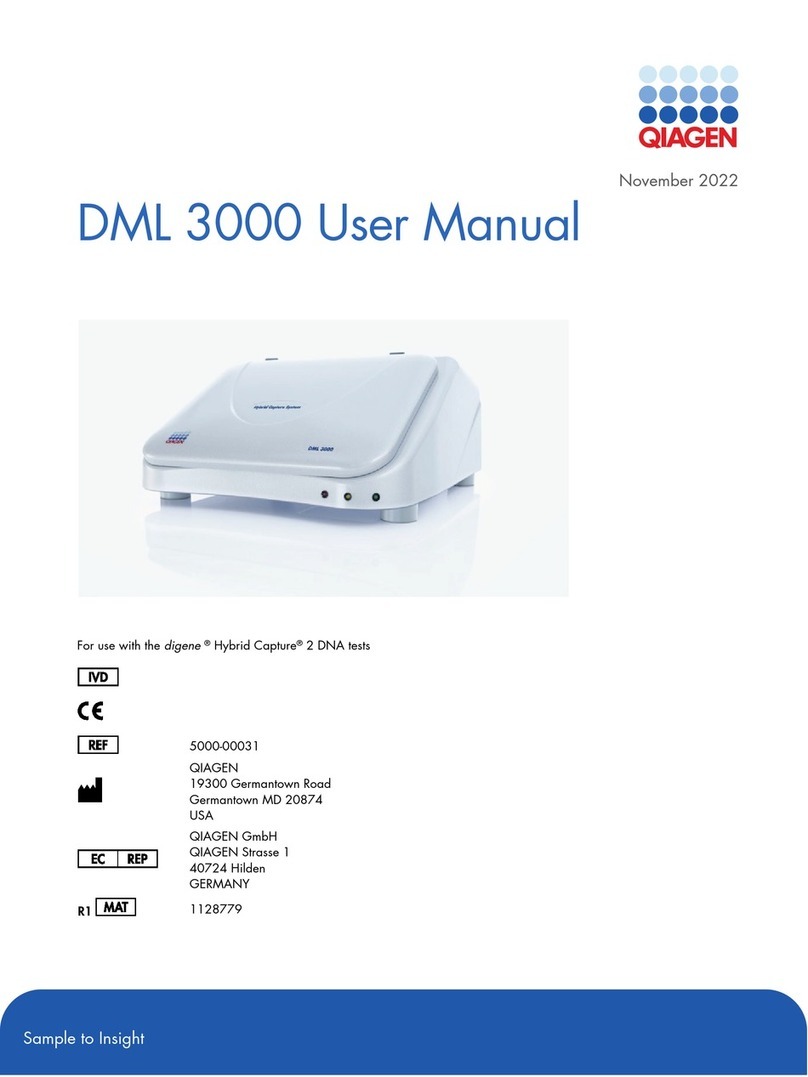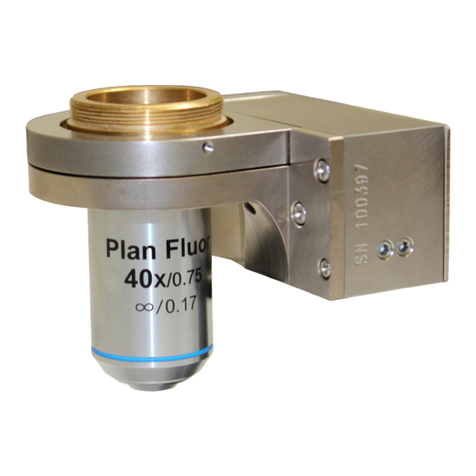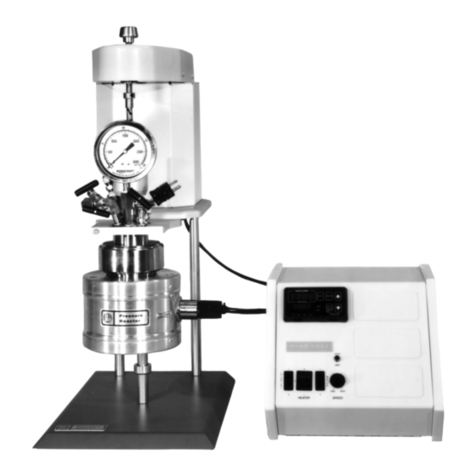
SpectroPipetter SPT & SPT-2
WORLD PRECISION INSTRUMENTS 7
baseline shift is corrected, the sample cell is clean and ready to be used for testing
another sample.
Using alcohol or acetonitrile as cleaning solutions: Certain residues, of course,
cannot be removed easily with distilled water. These primarily include molecules
that are neutral in charge and/or are only slightly polarized, as, for example,
Brilliant Green dye. The best way to remove residues of this type is to substitute
alcohol or acetonitrile for distilled water. To do this, expel the sample fluid, then
draw in and expel alcohol or acetonitrile. Repeat from three to five times, then use
the on-screen display to recheck the baseline in reference solution.
Cleaning organic solvents: If the SpectroPipetter is used with non-water soluble
organic solvents such as acetone, THF, benzene, etc., a thin layer of solvent (or
chemicals that dissolved in the solvent) will remain on the surface of the cell when
it is used later for aqueous solution sample. That thin layer can severely reduce the
transmission of the light especially in the ultraviolet range. It may also affect the
baseline stability of the spectrum. To remove this layer, use the ultrasonic cleaner
to clean the pipette in an organic solvent that can dissolve both the thin layer and
the water. Acetonitrile, DMF and DMSO are good solvents for this purpose. Another
cleaning method is to gradually increase the polarity of the washing solvent in
several steps.
When to use the ultrasonic bath: Sample residue that persists after rinsing can
be removed by using the ultrasonic bath. This device sends ultrasonic waves
through the pool of cleaning solution, causing implosion of microscopic bubbles in
the cleaning solution. The collapsing bubbles create a vacuum that draws
contaminants away from the surfaces being cleaned. Residues are removed from
the mirror and inner surface of the sample cell. The ultrasonic bath should be used
whenever a residue cannot be removed by simple rinsing, or whenever cross-
contamination must be eliminated completely.
Any of the solvents mentioned previously (distilled water, detergent, alcohol,
acetonitrile, or diluted WPI ultrasonic cleaning solution) can be used with an
ultrasonic cleaner. We have found that properly diluted WPI Cleaning Solution
Concentrate is effective for most applications.
Setting up an ultrasonic bath: Put the diluted cleaning solution into a 20 mL glass
scintillation vial, and set the vial in the ultrasonic tank which is partially filled with
distilled water. (Follow manufacturer’s directions for diluting commercial solutions.)

